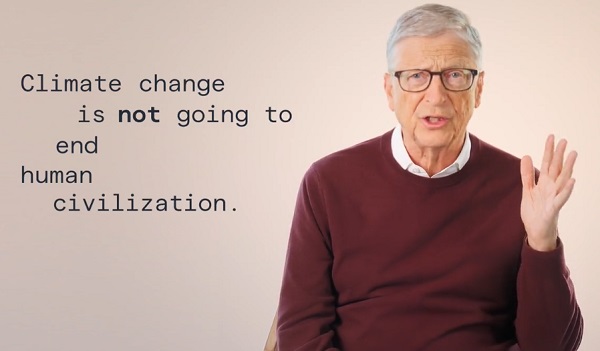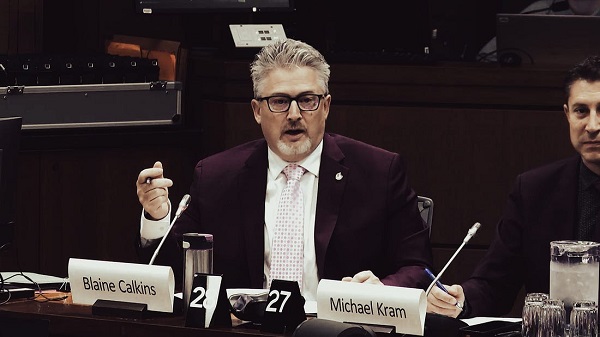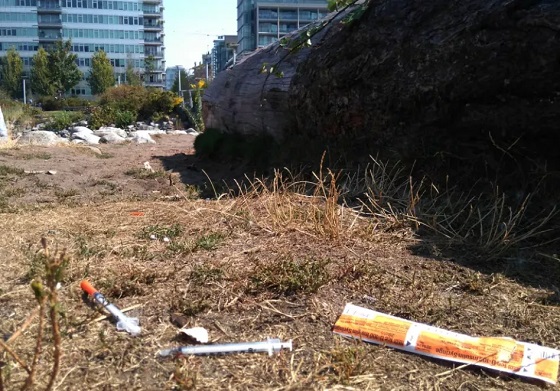Brownstone Institute
Did Lockdowns Set a Global Revolt in Motion?

From the Brownstone Institute
BY
It does seem like the backlash has empowered populist movements all over the world. We see them in the farmers’ revolt in Europe, the street protests in Brazil against a sketchy election, the widespread discontent in Canada over government policies, and even in migration trends out of US blue states toward red ones.
My first article on the coming backlash – admittedly wildly optimistic – went to print April 24, 2020. After 6 weeks of lockdown, I confidently predicted a political revolt, a movement against masks, a population-wide revulsion against the elites, a demand to reject “social distancing” and streaming-only life, plus widespread disgust at everything and everyone involved.
I was off by four years. I wrongly assumed back then that society was still functioning and that our elites would be responsive to the obvious flop of the whole lockdown scheme. I assumed that people were smarter than they proved to be. I also did not anticipate just how devastating the effects of lockdown would be: in terms of learning loss, economic chaos, cultural shock, and the population-wide demoralization and loss of trust.
The forces that set in motion those grim days were far more deep than I knew at the time. They involved a willing complicity from tech, media, pharma, and the administrative state at all levels of society.
There is every evidence that it was planned to be exactly what it became; not just a foolish deployment of public health powers but a “great reset” of our lives. The newfound powers of the ruling class were not given up so easily, and it took far longer for people to shake off the trauma than I had anticipated.
Is that backlash finally here? If so, it’s about time.
New literature is emerging to document it all.
The new book White Rural Rage: The Threat to American Democracy is a viciously partisan, histrionic, and gravely inaccurate account that gets nearly everything wrong but one: vast swaths of the public are fed up, not with democracy but its opposite of ruling class hegemony. The revolt is not racial and not geographically determined. It’s not even about left and right, categories that are mostly a distraction. it’s class-based in large part but more precisely about the rulers vs. the ruled.
With more precision, new voices are emerging among people who detect a “vibe change” in the population. One is Elizabeth Nickson’s article “Strongholds Falling; Populists Seize the Culture.” She argues, quoting Bret Weinstein, that “The lessons of [C]ovid are profound. The most important lesson of Covid is that without knowing the game, we outfoxed them and their narrative collapsed…The revolution is happening all over the socials, especially in videos. And the disgust is palpable.”
A second article is “Vibe Shift” by Santiago Pliego:
The Vibe Shift I’m talking about is the speaking of previously unspeakable truths, the noticing of previously suppressed facts. I’m talking about the give you feel when the walls of Propaganda and Bureaucracy start to move as you push; the very visible dust kicked up in the air as Experts and Fact Checkers scramble to hold on to decaying institutions; the cautious but electric rush of energy when dictatorial edifices designed to stifle innovation, enterprise, and thought are exposed or toppled. Fundamentally, the Vibe Shift is a return to—a championing of—Reality, a rejection of the bureaucratic, the cowardly, the guilt-driven; a return to greatness, courage, and joyous ambition.
We truly want to believe this is true. And this much is certainly correct: the battle lines are incredibly clear these days. The media that uncritically echo the deep-state line are known: Slate, Wired, Rolling Stone, Mother Jones, New Republic, New Yorker, and so on, to say nothing of the New York Times. What used to be politically partisan venues with certain predictable biases are now more readily described as ruling-class mouthpieces, forever instructing you precisely how to think while demonizing disagreement.
After all, all of these venues, in addition to the obvious case of the science journals, are still defending the lockdowns and everything that followed. Rather than express regret for their bad models and immoral means of control, they have continued to insist that they did the right thing, regardless of the civilization-wide carnage everywhere in evidence, while ignoring the relationship between the policies they championed and the terrible results.
Instead of allowing their mistakes to change their own outlook, they have adapted their own worldview to allow for snap lockdowns anytime they deem them necessary. In holding this view, they have forged a view of politics that it is embarrassingly acquiescent to the powerful.
The liberalism that once questioned authority and demanded free speech seems extinct. This transmogrified and captured liberalism now demands compliance with authority and calls for further restrictions on free speech. Now anyone who makes a basic demand for normal freedom – to speak or choose one’s own medical treatment or to decline to wear a mask – can reliably anticipate being denounced as “right-wing” even when it makes absolutely no sense.
The smears, cancellations, and denunciations are out of control, and so unbearably predictable.
It’s enough to make one’s head spin. As for the pandemic protocols themselves, there have been no apologies but only more insistence that they were imposed with the best of intentions and mostly correct. The World Health Organization wants more power, and so does the Centers for Disease Control and Prevention. Even though the evidence of the failure of pharma pours in daily, major media venues pretend that all is well, and thereby out themselves as mouthpieces for the ruling regime.
The issue is that major and unbearably obvious failures have never been admitted. Institutions and individuals who only double down on preposterous lies that everyone knows are lies only end up discrediting themselves.
That’s a pretty good summary of where we are today, with vast swaths of elite culture facing an unprecedented loss of trust. Elites have chosen the lie over truth and cover-up over transparency.
This is becoming operationalized in declining traffic for legacy media, which is shedding costly staff as fast as possible. The social media venues that cooperated closely with government during the lockdowns are losing cultural sway while uncensored ones like Elon Musk’s X are gaining attention. Disney is reeling from its partisanship, while states are passing new laws against WHO policies and interventions.
Sometimes this whole revolt can be quite entertaining. When the CDC or WHO posts an update on X, when they allow comments, it is followed by thousands of reader comments of denunciation and poking fun, with flurries of comments to the effect of “I will not comply.”
DEI is being systematically defunded by major corporations while financial institutions are turning on it. Indeed, the culture in general has come to regard DEI as a sure indication of incompetence. Meanwhile, the outer reaches of the “great reset” such as the hope that EVs would replace internal combustion have come to naught as the EV market has collapsed, along with consumer demand for fake meat to say nothing of bug eating.
As for politics, yes, it does seem like the backlash has empowered populist movements all over the world. We see them in the farmers’ revolt in Europe, the street protests in Brazil against a sketchy election, the widespread discontent in Canada over government policies, and even in migration trends out of US blue states toward red ones. Already, the administrative state in D.C. is working to secure itself against a possible unfriendly president in the form of Trump or RFK, Jr.
So, yes, there are many signs of revolt. These are all very encouraging.
What does all this mean in practice? How does this end? How precisely does a revolt take shape in an industrialized democracy? What is the mostly likely pathway for long-term social change? These are legitimate questions.
For hundreds of years, our best political philosophers have opined that no system can function in a sustainable way in which a huge majority is coercively governed by a tiny elite with a class interest in serving themselves at public expense.
That seems correct. In the days of the Occupy Wall Street movement of 15 years ago, the street protesters spoke of the 1 percent vs. the 99 percent. They were speaking of those with the money inside the traders’ buildings as opposed to the people on the streets and everywhere else.
Even if that movement misidentified the full nature of the problem, the intuition into which it tapped spoke to a truth. Such a disproportionate distribution of power and wealth is dangerously unsustainable. Revolution of some sort threatens. The mystery right now is what form this takes. It’s unknown because we’ve never been here before.
There is no real historical record of a highly developed society ostensibly living under a civilized code of law that experiences an upheaval of the type that would be required to unseat the rulers of all the commanding heights. We’ve seen political reform movements that take place from the top down but not really anything that approximates a genuine bottom-up revolution of the sort that is shaping up right now.
We know, or think we know, how it all transpires in a tinpot dictatorship or a socialist society of the old Soviet bloc. The government loses all legitimacy, the military flips loyalties, there is a popular revolt that boils over, and the leaders of the government flee. Or they simply lose their jobs and take up new positions in civilian life. These revolutions can be violent or peaceful but the end result is the same. One regime replaces another.
It’s hard to know how this translates to a society that is heavily modernized and seen as non-totalitarian and even existing under the rule of law, more or less. How does revolution occur in this case? How does the regime come around to adapting itself to a public revolt against governance as we know it in the US, UK, and Europe?
Yes, there is the vote, if we can trust that. But even here, there are the candidates, which are that for a reason. They specialize in politics, which does not necessarily mean doing the right thing or reflecting the aspirations of the voters behind them. They are responsive to their donors first, as we have long discovered. Public opinion can matter but there is no mechanism that guarantees a smoothly responsive pathway from popular attitudes to political outcomes.
There is also the pathway of industrial change, a migration of resources out of legacy venues to new ones. Indeed, in the marketplace of ideas, the amplifiers of regime propaganda are failing but we also observe the response: widened censorship. What’s happening in Brazil with the full criminalization of free speech can easily happen in the US.
In social media, were it not for Elon’s takeover of Twitter, it’s hard to know where we would be. We have no large platform in which to influence the culture more broadly. And yet the attacks on that platform and other enterprises owned by Musk are growing. This is emblematic of a much more robust upheaval taking place, one that suggests change is on the way.
But how long does such a paradigm shift take? Thomas Kuhn’s The Structure of Scientific Revolutions is a bracing account of how one orthodoxy migrates to another not by the ebb and flow of proof and evidence but through dramatic paradigm shifts. An abundance of anomalies can wholly discredit a current praxis but that doesn’t make it go away. Ego and institutional inertia perpetuate the problem until its most prominent exponents retire and die and a new elite replaces them with different ideas.
In this model, we can expect that a failed innovation in science, politics, or technology could last as long as 70 years before finally being displaced, which is roughly how long the Soviet experiment lasted. That’s a depressing thought. If this is true, we still have another 60 plus years of rule by the management professionals who enacted lockdowns, closures, shot mandates, population propaganda, and censorship.
And yet, people say that history is moving faster now than in the past. If a future of freedom is ours just lying in wait, we need that future here sooner rather than later, before it is too late to do anything about it.
The slogan became popular about ten years ago: the revolution will be decentralized with the creation of robust parallel institutions. There is no other path. The intellectual parlor game is over. This is a real-life struggle for freedom itself. It’s resist and rebuild or doom.
Brownstone Institute
The Doctor Will Kill You Now

From the Brownstone Institute
Way back in the B.C. era (Before Covid), I taught Medical Humanities and Bioethics at an American medical school. One of my older colleagues – I’ll call him Dr. Quinlan – was a prominent member of the faculty and a nationally recognized proponent of physician-assisted suicide.
Dr. Quinlan was a very nice man. He was soft-spoken, friendly, and intelligent. He had originally become involved in the subject of physician-assisted suicide by accident, while trying to help a patient near the end of her life who was suffering terribly.
That particular clinical case, which Dr. Quinlan wrote up and published in a major medical journal, launched a second career of sorts for him, as he became a leading figure in the physician-assisted suicide movement. In fact, he was lead plaintiff in a challenge of New York’s then-prohibition against physician-assisted suicide.
The case eventually went all the way to the US Supreme Court, which added to his fame. As it happened, SCOTUS ruled 9-0 against him, definitively establishing that there is no “right to die” enshrined in the Constitution, and affirming that the state has a compelling interest to protect the vulnerable.
SCOTUS’s unanimous decision against Dr. Quinlan meant that his side had somehow pulled off the impressive feat of uniting Antonin Scalia, Ruth Bader Ginsberg, and all points in between against their cause. (I never quite saw how that added to his luster, but such is the Academy.)
At any rate, I once had a conversation with Dr. Quinlan about physician-assisted suicide. I told him that I opposed it ever becoming legal. I recall he calmly, pleasantly asked me why I felt that way.
First, I acknowledged that his formative case must have been very tough, and allowed that maybe, just maybe, he had done right in that exceptionally difficult situation. But as the legal saying goes, hard cases make bad law.
Second, as a clinical physician, I felt strongly that no patient should ever see their doctor and have to wonder if he was coming to help keep them alive or to kill them.
Finally, perhaps most importantly, there’s this thing called the slippery slope.
As I recall, he replied that he couldn’t imagine the slippery slope becoming a problem in a matter so profound as causing a patient’s death.
Well, maybe not with you personally, Dr. Quinlan, I thought. I said no more.
But having done my residency at a major liver transplant center in Boston, I had had more than enough experience with the rather slapdash ethics of the organ transplantation world. The opaque shuffling of patients up and down the transplant list, the endless and rather macabre scrounging for donors, and the nebulous, vaguely sinister concept of brain death had all unsettled me.
Prior to residency, I had attended medical school in Canada. In those days, the McGill University Faculty of Medicine was still almost Victorian in its ways: an old-school, stiff-upper-lip, Workaholics-Anonymous-chapter-house sort of place. The ethic was hard work, personal accountability for mistakes, and above all primum non nocere – first, do no harm.
Fast forward to today’s soft-core totalitarian state of Canada, the land of debanking and convicting peaceful protesters, persecuting honest physicians for speaking obvious truth, fining people $25,000 for hiking on their own property, and spitefully seeking to slaughter harmless animals precisely because they may hold unique medical and scientific value.
To all those offenses against liberty, morality, and basic decency, we must add Canada’s aggressive policy of legalizing, and, in fact, encouraging industrial-scale physician-assisted suicide. Under Canada’s Medical Assistance In Dying (MAiD) program, which has been in place only since 2016, physician-assisted suicide now accounts for a terrifying 4.7 percent of all deaths in Canada.
MAiD will be permitted for patients suffering from mental illness in Canada in 2027, putting it on par with the Netherlands, Belgium, and Switzerland.
To its credit, and unlike the Netherlands and Belgium, Canada does not allow minors to access MAiD. Not yet.
However, patients scheduled to be terminated via MAiD in Canada are actively recruited to have their organs harvested. In fact, MAiD accounts for 6 percent of all deceased organ donors in Canada.
In summary, in Canada, in less than 10 years, physician-assisted suicide has gone from illegal to both an epidemic cause of death and a highly successful organ-harvesting source for the organ transplantation industry.
Physician-assisted suicide has not slid down the slippery slope in Canada. It has thrown itself off the face of El Capitan.
And now, at long last, physician-assisted suicide may be coming to New York. It has passed the House and Senate, and just awaits the Governor’s signature. It seems that the 9-0 Supreme Court shellacking back in the day was just a bump in the road. The long march through the institutions, indeed.
For a brief period in Western history, roughly from the introduction of antibiotics until Covid, hospitals ceased to be a place one entered fully expecting to die. It appears that era is coming to an end.
Covid demonstrated that Western allopathic medicine has a dark, sadistic, anti-human side – fueled by 20th-century scientism and 21st-century technocratic globalism – to which it is increasingly turning. Physician-assisted suicide is a growing part of this death cult transformation. It should be fought at every step.
I have not seen Dr. Quinlan in years. I do not know how he might feel about my slippery slope argument today.
I still believe I was correct.
Brownstone Institute
Trump Covets the Nobel Peace Prize

From the Brownstone Institute
By
Many news outlets reported the announcement of the Nobel Peace Prize on Friday by saying President Donald Trump had missed out (Washington Post, Yahoo, Hindustan Times, Huffington Post), not won (USA Today), fallen short (AP News), lost (Time), etc. There is even a meme doing the rounds about ‘Trump Wine.’ ‘Made from sour grapes,’ the label explains, ‘This is a full bodied and bitter vintage guaranteed to leave a nasty taste in your mouth for years.’

For the record, the prize was awarded to María Corina Machado for her courageous and sustained opposition to Venezuela’s ruling regime. Trump called to congratulate her. Given his own attacks on the Venezuelan president, his anger will be partly mollified, and he could even back her with practical support. He nonetheless attacked the prize committee, and the White House assailed it for putting politics before peace.
He could be in serious contention next year. If his Gaza peace plan is implemented and holds until next October, he should get it. That he is unlikely to do so is more a reflection on the award and less on Trump.
So He Won the Nobel Peace Prize. Meh!
Alfred Nobel’s will stipulates the prize should be awarded to the person who has contributed the most to promote ‘fraternity between nations…abolition or reduction of standing armies and…holding and promotion of peace congresses.’ Over the decades, this has expanded progressively to embrace human rights, political dissent, environmentalism, race, gender, and other social justice causes.
On these grounds, I would have thought the Covid resistance should have been a winner. The emphasis has shifted from outcomes and actual work to advocacy. In honouring President Barack Obama in 2009, the Nobel committee embarrassed itself, patronised him, and demeaned the prize. His biggest accomplishment was the choice of his predecessor as president: the prize was a one-finger send-off to President George W. Bush.
There have been other strange laureates, including those prone to wage war (Henry Kissinger, 1973), tainted through association with terrorism (Yasser Arafat, 1994), and contributions to fields beyond peace, such as planting millions of trees. Some laureates were subsequently discovered to have embellished their record, and others proved to be flawed champions of human rights who had won them the treasured accolade.
Conversely, Mahatma Gandhi did not get the prize, not for his contributions to the theory and practice of non-violence, nor for his role in toppling the British Raj as the curtain raiser to worldwide decolonisation. The sad reality is how little practical difference the prize has made to the causes it espoused. They bring baubles and honour to the laureates, but the prize has lost much of its lustre as far as results go.
Trump Was Not a Serious Contender
The nomination processes start in September and nominations close on 31 January. The five-member Norwegian Nobel committee scrutinises the list of candidates and whittles it down between February and October. The prize is announced on or close to 10 October, the date Alfred Nobel died, and the award ceremony is held in Oslo in early December.
The calendar rules out a newly elected president in his first year, with the risible exception of Obama. The period under review was 2024. Trump’s claims to have ended seven wars and boasts of ‘nobody’s ever done that’ are not taken seriously beyond the narrow circle of fervent devotees, sycophantic courtiers, and supplicant foreign leaders eager to ingratiate themselves with over-the-top flattery.
Trump Could Be in Serious Contention Next Year
Trump’s 20-point Gaza peace plan falls into three conceptual-cum-chronological parts: today, tomorrow, and the day after. At the time of writing, in a hinge moment in the two-year war, Israel has implemented a ceasefire in Gaza, Hamas has agreed to release Israeli hostages on 13-14 October, and Israel will release around 2,000 Palestinian prisoners (today’s agenda). So why are the ‘Ceasefire Now!’ mobs not out on the streets celebrating joyously instead of looking morose and discombobulated? Perhaps they’ve been robbed of the meaning of life?
The second part (tomorrow) requires Hamas demilitarisation, surrender, amnesty, no role in Gaza’s future governance, resumption of aid deliveries, Israeli military pullbacks, a temporary international stabilisation force, and a technocratic transitional administration. The third part, the agenda for the day after, calls for the deradicalisation of Gaza, its reconstruction and development, an international Peace Board to oversee implementation of the plan, governance reforms of the Palestinian Authority, and, over the horizon, Palestinian statehood.
There are too many potential pitfalls to rest easy on the prospects for success. Will Hamas commit military and political suicide? How can the call for democracy in Gaza and the West Bank be reconciled with Hamas as the most popular group among Palestinians? Can Israel’s fractious governing coalition survive?
Both Hamas and Israel have a long record of agreeing to demands under pressure but sabotaging their implementation at points of vulnerability. The broad Arab support could weaken as difficulties arise. The presence of the internationally toxic Tony Blair on the Peace Board could derail the project. Hamas has reportedly called on all factions to reject Blair’s involvement. Hamas official Basem Naim, while thanking Trump for his positive role in the peace deal, explained that ‘Palestinians, Arabs and Muslims and maybe a lot [of] people around the world still remember his [Blair’s] role in causing the killing of thousands or millions of innocent civilians in Afghanistan and Iraq.’
It would be a stupendous achievement for all the complicated moving parts to come together in stable equilibrium. What cannot and should not be denied is the breathtaking diplomatic coup already achieved. Only Trump could have pulled this off.
The very traits that are so offputting in one context helped him to get here: narcissism; bullying and impatience; bull in a china shop style of diplomacy; indifference to what others think; dislike of wars and love of real estate development; bottomless faith in his own vision, negotiating skills, and ability to read others; personal relationships with key players in the region; and credibility as both the ultimate guarantor of Israel’s security and preparedness to use force if obstructed. Israelis trust him; Hamas and Iran fear him.
The combined Israeli-US attacks to degrade Iran’s nuclear capability underlined the credibility of threats of force against recalcitrant opponents. Unilateral Israeli strikes on Hamas leaders in Qatar highlighted to uninvolved Arabs the very real dangers of continued escalation amidst the grim Israeli determination to rid themselves of Hamas once and for all.
Trump Is Likely to Be Overlooked
Russia has sometimes been the object of the Nobel Peace Prize. The mischievous President Vladimir Putin has suggested Trump may be too good for the prize. Trump’s disdain for and hostility to international institutions and assaults on the pillars of the liberal international order would have rubbed Norwegians, among the world’s strongest supporters of rules-based international governance, net zero, and foreign aid, the wrong way.
Brash and public lobbying for the prize, like calling the Norwegian prime minister, is counterproductive. The committee is fiercely independent. Nominees are advised against making the nomination public, let alone orchestrating an advocacy campaign. Yet, one laureate is believed to have mobilised his entire government for quiet lobbying behind the scenes, and another to have bad-mouthed a leading rival to friendly journalists.
Most crucially, given that Scandinavian character traits tip towards the opposite end of the scale, it’s hard to see the committee overlooking Trump’s loud flaws, vanity, braggadocio, and lack of grace and humility. Trump supporters discount his character traits and take his policies and results seriously. Haters cannot get over the flaws to seriously evaluate policies and outcomes. No prizes for guessing which group the Nobel committee is likely to belong to. As is currently fashionable to say when cancelling someone, Trump’s values do not align with those of the committee and the ideals of the prize.
-

 Alberta1 day ago
Alberta1 day agoFrom Underdog to Top Broodmare
-

 Business12 hours ago
Business12 hours agoTrans Mountain executive says it’s time to fix the system, expand access, and think like a nation builder
-

 Economy1 day ago
Economy1 day agoIn his own words: Stunning Climate Change pivot from Bill Gates. Poverty and disease should be top concern.
-

 Business1 day ago
Business1 day agoPaying for Trudeau’s EV Gamble: Ottawa Bought Jobs That Disappeared
-

 Business1 day ago
Business1 day agoCBC uses tax dollars to hire more bureaucrats, fewer journalists
-

 International10 hours ago
International10 hours agoBiden’s Autopen Orders declared “null and void”
-

 National1 day ago
National1 day agoElection Officials Warn MPs: Canada’s Ballot System Is Being Exploited
-

 Addictions1 day ago
Addictions1 day agoThe Shaky Science Behind Harm Reduction and Pediatric Gender Medicine









